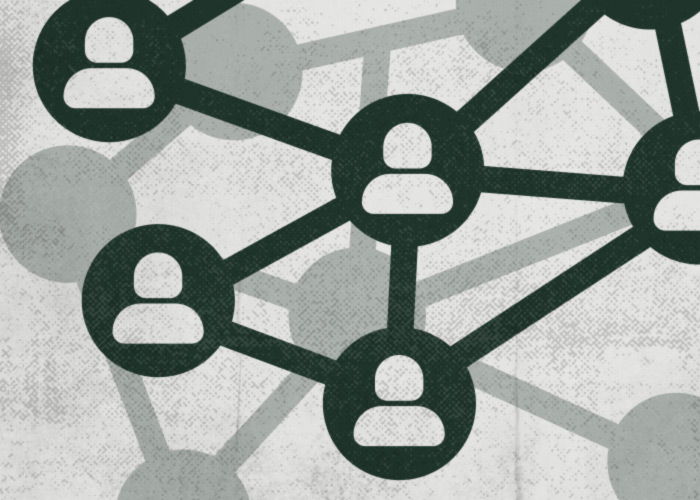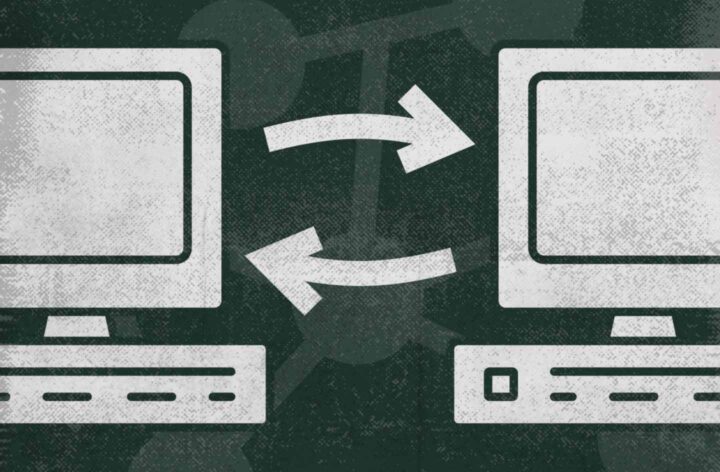Web3: Decentralized Online Ecosystem of the Future

Firstly, it should be noted that Web3 and Web 3.0 are two different concepts. Web3 is short for “Web3 technologies” or “Web3 stack.” The term’s author, Gavin Wood, Founder of Polkadot and Co-Founder of Ethereum, described Web3 as “a decentralized online ecosystem based on the blockchain.” So, we’ll be talking specifically about Web3.
Read more about how Web3 differs from Web 3.0 in a special article by CP Media.
What Is Web3?

Web3 is a concept that involves the development of decentralized technologies such as blockchain, smart contracts, dApps, P2P protocols, DIDs, and cryptocurrencies, among others. They eliminate the centralization of the global network, automate data processing and interpretation, increase security and transparency, and provide a high level of autonomy to users.
Main Features of Web3

The concept of Web3 is based on several fundamental principles, which are basic for absolutely all elements of the Web3 space. The main ones include:
- Decentralization. All data, applications, and content in the Web3 space are distributed among the network participants and don’t involve centralized management. This improves data security and management.
- Interoperability. Web3 is based on the concept of creating a unified infrastructure where different blockchains and decentralized applications (dApps) can interact with each other, enabling more efficient use of network resources.
- Data control. Everyone in the Web3 space can control their personal data by using distributed identity systems. This enhances the privacy and security of personal data and provides more secure access to network services and resources.
- Cryptocurrencies and tokens. Web3 uses digital assets to drive necessary action on the part of the community. Cryptocurrencies and tokens also serve as the equivalent of value within the Web3 ecosystem and enable new business and governance models.
In essence, Web3 is an endeavor to create a secure, reliable, and self-sufficient online environment where each participant can have full control over their data and finances, being able to manage them within the ecosystem without limits or centralized intermediaries.
Web3 Use Cases

Web3 technologies are rapidly evolving and have already found their application in many areas of modern life. Let’s look at specific examples of the practical use of decentralized technologies.
Blockchain and Cryptocurrencies
Blockchain is one of the core technologies of Web3. It’s a distributed database (DLT), a chain of information blocks that provides a high level of security and transparency, making it an ideal tool for use in Web3.
Cryptocurrency is one of the main but by no means the only, examples of using blockchain technology. Cryptocurrencies use blockchain to capture and validate transactions, bringing the reliability and convenience of financial transfers to a new level. Cryptocurrencies can also provide increased user privacy on the network, which is fully consistent with the principles of Web3.
Decentralized Finance (DeFi)
Web3 is now the primary space for creating DeFi apps that provide services usually offered only by banks and other traditional financial institutions. In early 2023, total value locked (TVL) across the various DeFi protocols reached $74.6 billion.
Due to Web3 principles, the decentralized finance market continues to grow actively and is already competing with TradFi, as DeFi applications often provide users with more convenience and better meet their needs. Nevertheless, it should be noted that because of its young age, the decentralized finance sphere still has too many vulnerabilities.
Decentralized Social Networks
Social communication is essential to the global network, so the Web3 concept focuses on social networking.
Decentralized social networks represent a new generation of social platforms based on the principles of decentralization, privacy, and user control over their data. Users of such services can verify and validate data and content created by other participants. This helps combat fake news and manipulation and increases trust online. Social networks in Web3 create a more secure and private environment for communication and information sharing than centralized applications like Facebook or Twitter.
For example, the open source social network Mastodon, often called an alternative to Twitter, allows users to create their own servers and fully control all aspects of their social life online. Other examples of decentralized social networks are Steemit, Diaspora, and Manyverse.
Gaming Applications
The GameFi sector has emerged thanks to Web3, as developers are now empowered to create the next generation of gaming applications and improve existing projects. Web3 games also allow players to control their personal data, providing a more secure gaming environment.
Gaming apps in Web3 allow gamers to earn from their in-game skills and achievements using digital assets. In the future, players will be able to freely exchange in-game items and resources between different game apps. Experts estimate that the GameFi market could reach $2.8 billion by 2028.
Decentralized Data Storage
Web3 opened up the ability to store, process, and share data across multiple nodes on a network without centralized structures. Decentralized data storage uses blockchain technology that ensures data reliability, integrity, and privacy.
An example of decentralized storage is the InterPlanetary File System (IPFS) communication protocol that can be used to create distributed file systems to store and exchange files of any type. Unlike centralized counterparts where data is stored on company servers, the IPFS uses a P2P (peer-to-peer) mechanism allowing users to store files on their computers while exchanging them directly with each other.
Moreover, the Web3 space has decentralized databases for joint storage and exchange of information, providing a high level of security, integrity, and availability of data, as well as increased privacy and protection against unauthorized access. Swarm, a decentralized storage and communication service, serves as an example of such a project.
Decentralized and Distributed Computing
Web3 enables individuals to engage in distributed computing across decentralized networks, i.e., on devices owned by ordinary people, which can be located in different parts of the world. This serves as a viable alternative to relying on massive data centers.
One example of Web3-based decentralized computing is the Golem Network project that harnesses users’ computing power to perform various tasks, such as video rendering, scientific computing, and software testing. This efficiently uses computing power and protects data from potential cyberattacks as it’s distributed across different devices and servers.
In addition, distributed computing can be used to create dApps that can operate without a centralized server, such as decentralized browsers and messengers.
Decentralized Autonomous Organizations (DAO)
Web3 technologies introduce an entirely new approach to managing and voting within organizations. The principles of decentralized governance underlying DAOs allow community members to participate directly in decision-making and management without being physically present or disclosing personal information.
All of this is possible thanks to the development of voting mechanisms based on smart contracts, which are part of the Web3 ecosystem. This approach allows for fairer and more transparent governance without centralized power.
Read more about DAOs in this CP Media Academy article.
These are just some of the brightest examples of using Web3 in today’s world. According to some experts, Web3 can become one of the key trends in the development of information technology in the near future and will be more widely used in other areas: education, medicine, logistics, public administration, records management, and other areas.
Disadvantages of Web3

The advantages of the Web3 concept lie in its features related to security, privacy, data management, openness, and transparency, forming new opportunities for developers and entrepreneurs.
As for the disadvantages of Web3, several important aspects hamper its mass adoption:
- Complexity. Web3 remains challenging to understand and use, especially in areas where it must be integrated into existing systems and processes. The lack of qualified personnel in this field adds to the problem. Major countries are actively seeking to remedy the situation by creating blockchain training centers and introducing cryptocurrencies into school curricula.
- Low scalability. Some “older” blockchains, such as Bitcoin, face scalability issues, especially if the number of users or transactions increases dramatically, causing delays and network congestion. However, some more modern blockchain networks have already overcome this problem through improvements in consensus algorithms.
- Level of security. Today, hacking and fraud activity in Web3 is intense, which is directly related to the first point on this list. For instance, hackers stole more than $3 billion from various cryptocurrency protocols in 2022.
- Lack of regulation. The decentralized nature of Web3 attracts the attention of government regulators, who find it difficult to control this sphere and hinder its development.
- Energy cost. The sustainability and energy efficiency of Web3 systems has long been a hot topic of discussion. For example, the Bitcoin blockchain network requires a significant amount of energy to maintain its performance, though some researchers dispute this claim. On the other hand, this issue is also being addressed, and the Ethereum network updated its consensus algorithm in September 2022, reducing the number of emissions associated with its operation by 99%.
In short, all of the disadvantages listed are solvable, and Web3 is a promising technological concept that could change the way we interact on the global network and presents a wide range of possibilities for innovation, opening the way to a more decentralized, secure, and inclusive digital future.v











